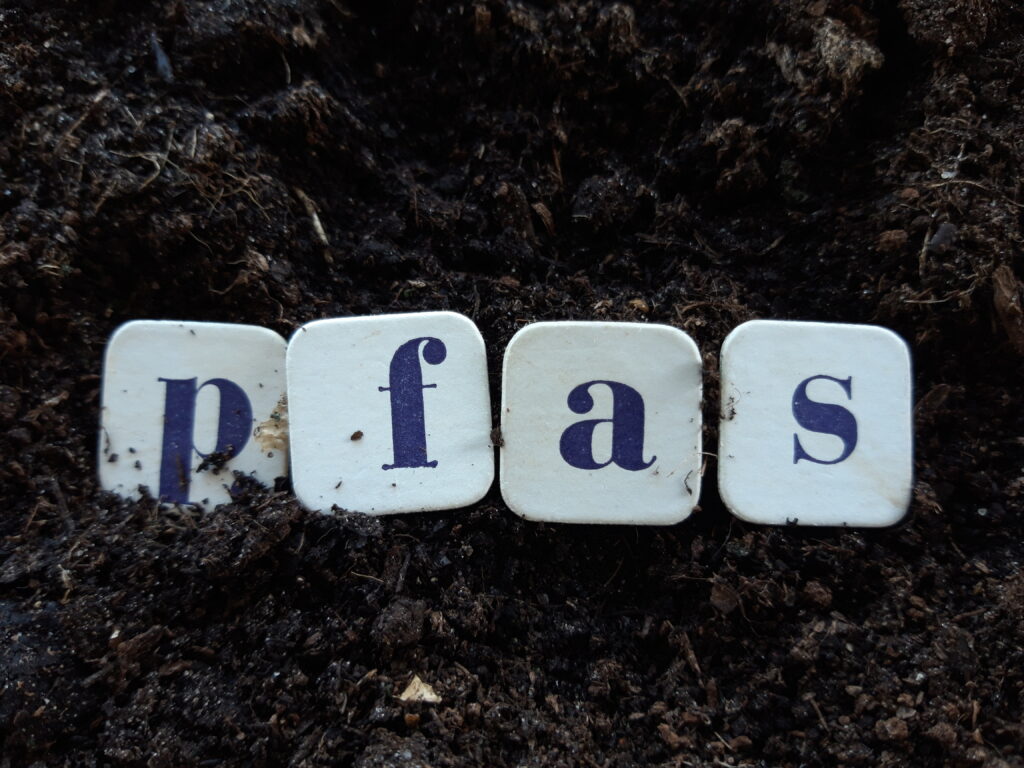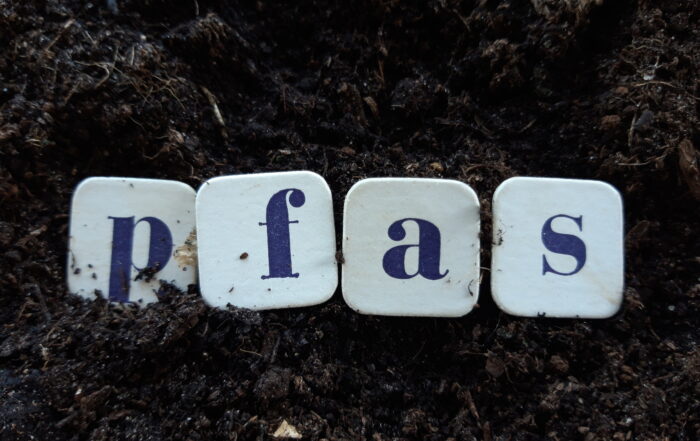
Legal Updates on PFAS in Products
By Trenton H. Norris, Elissa J. Preheim, Judah Prero & Will Wagner
California and other state legislatures have been busy in the last several years considering and enacting sweeping new laws that prohibit food packaging, cosmetics, and other consumer products like cookware and apparel from containing per- and polyfluoroalkyl substances (PFAS). Notably, these laws generally are not limited to a particular PFAS like PFOA, but instead regulate all PFAS as a group, despite substantial variance in potential toxicity and environmental impacts among particular PFAS chemistries. In addition to the statutory and regulatory developments, the plaintiffs’ bar has followed suit and filed dozens of class action complaints against companies based on alleged PFAS in food packaging, cosmetics, and apparel. This is expected to be a major trend over the next several years and could expand to other product groups and industries.
PFAS are a group of as many as thousands of fluorinated organic chemicals that may be used in consumer products or packaging for a variety of reasons, including durability. Certain PFAS are referred to as “forever chemicals” because of concerns that they may bioaccumulate and persist in the environment, while other PFAS do not have these characteristics, and some are approved food contact materials in the United States. However, the recent legislative and litigation activity regarding PFAS, as a group, is something for all companies that sell products that may contain organic fluorine, even at trace levels, to consider.
Recently Enacted California Laws and Regulations
In 2021, the California Legislature enacted a law that will limit or prohibit the use of PFAS in food packaging and cookware. Starting January 1, 2023, food packaging comprised of paper, paperboard, or other plant fibers containing “regulated PFAS” is prohibited. The law defines “regulated PFAS” as PFAS that have either 1) been intentionally added and has a functional or technical effect in a product, or 2) is in a product greater or equal to 100 parts per million (ppm) as measured in total organic fluorine. The law does not include a sell-through exception, so packaging being sold to consumers as of January 1, 2023 must comply with this law.[1]
In largely overlooked statutory amendments in bills passed in 2021 that impact product advertising, California law now prohibits the use of “compostable” or similar green marketing claims, as well as the use of the chasing arrows recycling symbol or other recyclability claims, when 1) PFAS are intentionally added to a product; or 2) a product contains PFAS at a level greater than 100 ppm, as measured in total organic fluorine.
Outside of the 2021 legislative session, there are several other California PFAS-oriented laws and regulations that product companies should be aware of. First, there has been significant regulatory activity under California’s Proposition 65 related to PFAS. Both PFOA and PFOS were listed as reproductive toxicants under Proposition 65 in 2017. PFOA and PFOS (and its salts and degradation precursors) were also recently listed as carcinogens under Proposition 65, along with PFNA and its salts being listed as a reproductive toxicant. A handful of other PFAS are currently being considered for listing. It is anticipated that the state will continue to focus on listing different PFAS under Proposition 65 in coming years, and the proliferation of private enforcement actions will continue.
Finally, the Toxic Free Cosmetic Act, passed in 2020, prohibits the sale of cosmetic products containing any of 24 intentionally added chemicals, including 13 PFAS chemicals—most notably PFOA and PFOS.[2]
2022 PFAS Bills
This year, the California Legislature is again actively taking aim at products that may contain PFAS. The Legislature is considering a bill that would prohibit the use of any and all PFAS in cosmetic products. The bill was recently amended to limit is application to “intentionally added” PFAS and is expected to pass.
Another bill would create a reporting requirement for any personal, residential, commercial, or industrial product that contains PFAS. Manufacturers of products that contain PFAS would have to report certain information about the product to the state via a platform setup with the Interstate Chemicals Clearinghouse. The reporting requirements would begin on or before July 1, 2024 and would continue annually thereafter.
Finally, the Legislature is considering a bill that would prohibit the use of PFAS in apparel and textiles. It is likely that the Legislature will continue to expand the regulation of PFAS in products in subsequent legislative sessions.
Legislation in Other States
California is not the only state that has enacted new laws focused on PFAS in products. Legislation enacted in Maine contains the most far-reaching prohibitions. Starting in 2023, manufacturers of a product sold in Maine containing intentionally added PFAS must submit a written notification to the Maine Department of Environmental Protection that includes: a brief description of the product; the purpose for which PFAS are used in the product, including use in any product components; the amount of each of the PFAS, identified by its chemical abstracts service registry number, in the product; the name and address of the manufacturer; and the name, address, and phone number of a contact person for the manufacturer.
The new Maine law also authorizes the state to identify products from which PFAS may be banned in the future. The most significant part of the new law is the sweeping ban: effective in 2030, products containing intentionally added PFAS cannot be sold unless the state specifically concludes that the use of PFAS in the product is currently unavoidable.
A number of states have imposed restrictions on food packaging that contain PFAS. A Connecticut law bars manufacturers and distributors from offering for sale or for promotion purposes food packages to which PFAS have been intentionally introduced. The prohibition takes effect on December 31, 2023, but requires manufacturers and distributors to take action “[a]s soon as feasible.” The law includes a provision requiring that any replacement material in a package or packaging component not create a hazard “as great as, or greater than” the hazard created by the regulated chemical. In Minnesota, the manufacture, sale, and distribution of a food package that contains intentionally added PFAS is forbidden as of January 1, 2024. A New York law prohibits anyone from distributing, selling, or offering for sale any food in packaging that contains PFAS beginning December 31, 2022. In Vermont, a manufacturer, supplier, or distributor may not offer for sale, distribute for sale, or distribute for use a food package to which PFAS have been intentionally added and are present in any amount beginning July 1, 2023.
Washington State and Maine also have laws banning the use of PFAS in food packaging. In 2018, Washington amended its own law concerning toxics in packaging to include a ban on PFAS in food packaging, as long as the Washington Department of Ecology was able to identify a “safer” alternative in the meantime. In February 2021, the Department determined that PFAS-free alternatives are available for wraps and liners, plates, food boats, and pizza boxes. Consequently, as of February 2023, PFAS may no longer be in these types of food packaging in Washington. However, the Department was not able to identify PFAS-free alternatives for bags and sleeves, bowls, trays, French fry cartons, clamshells, and interlocking folded containers.
Similarly, in June 2019, Maine enacted a prohibition on the sale of PFAS-containing food packaging that would take effect once the Maine Department of Environmental Protection was able to identify “safer” alternatives. Maine determined that it could utilize the Washington alternatives analysis for purposes of its food packaging law. However, due to differences in Maine and Washington’s regional markets, Maine required more information to assess the availability and comparable cost of the alternatives identified by the Washington report before moving forward with any prohibitions.
Many states have PFAS bills pending in their legislatures. Bills banning PFAS in food packaging have been introduced in Colorado, Hawaii, Iowa, Massachusetts, Michigan, Pennsylvania, and Rhode Island. Bills that would restrict PFAS in personal care products and cosmetics have been introduced in New Hampshire, Massachusetts, North Carolina, and Vermont. Finally, bills that would mandate the placement of warning labels on PFAS-containing products have been introduced in New Hampshire and Vermont. State action on PFAS is likely to continue for the foreseeable future.
Recent Class Action Litigation
In recent months, dozens of PFAS class action complaints have been filed against fast food chains (for food packaging), cosmetic manufacturers, and apparel companies. Generally, these cases claim that the products at issue are falsely advertised as being clean, safe, or environmentally friendly because they allegedly contain undisclosed PFAS, as measured by either fluorine or organic fluorine content. This trend is expected to continue and expand in coming months to other products.
[1] The law places similar requirements on cookware products. Additionally, also passed in the 2021 session, a different law regulates the use of PFAS in products designed for use by infants and children under 12 (coined “juvenile products”).
[2] Maryland enacted an almost identical law in 2021.

 TRENT NORRIS, one of the foremost consumer product attorneys in the country, litigates complex scientific and technical disputes involving consumer protection, advertising, environmental, and food and drug law, with a particular emphasis on the unique requirements of California law. His litigation, counseling, and government advocacy practice involves some of the most significant challenges for manufacturers and retailers of everyday products and services.
TRENT NORRIS, one of the foremost consumer product attorneys in the country, litigates complex scientific and technical disputes involving consumer protection, advertising, environmental, and food and drug law, with a particular emphasis on the unique requirements of California law. His litigation, counseling, and government advocacy practice involves some of the most significant challenges for manufacturers and retailers of everyday products and services. ELISSA PREHEIM has significant experience litigating toxic tort lawsuits, Clean Water Act litigation, and natural resource damages claims related to contaminated sites, including medical monitoring, personal injury, and property damages actions. She regularly litigates high stakes matters involving parallel proceedings, including federal and state Superfund proceedings.
ELISSA PREHEIM has significant experience litigating toxic tort lawsuits, Clean Water Act litigation, and natural resource damages claims related to contaminated sites, including medical monitoring, personal injury, and property damages actions. She regularly litigates high stakes matters involving parallel proceedings, including federal and state Superfund proceedings. JUDAH PRERO focuses his practice on counseling clients on environmental, health, and safety issues before legislators, regulators, and government agencies. He advises on chemical management laws and regulations, including laws under the jurisdiction of the Environmental Protection Agency, the Consumer Products Safety Commission, and the Department of Homeland Security.
JUDAH PRERO focuses his practice on counseling clients on environmental, health, and safety issues before legislators, regulators, and government agencies. He advises on chemical management laws and regulations, including laws under the jurisdiction of the Environmental Protection Agency, the Consumer Products Safety Commission, and the Department of Homeland Security. WILL WAGNER focuses his practice on consumer product defense, regulatory compliance, and lobbying consumer product issues in California, with a focus on defending and advising companies on California’s unique Proposition 65 law. His experience includes defending companies against putative or threatened class action lawsuits based on PFAS, greenwashing claims, nonfunctional slack-fill allegations, and claims relating to the purity of a product.
WILL WAGNER focuses his practice on consumer product defense, regulatory compliance, and lobbying consumer product issues in California, with a focus on defending and advising companies on California’s unique Proposition 65 law. His experience includes defending companies against putative or threatened class action lawsuits based on PFAS, greenwashing claims, nonfunctional slack-fill allegations, and claims relating to the purity of a product.


